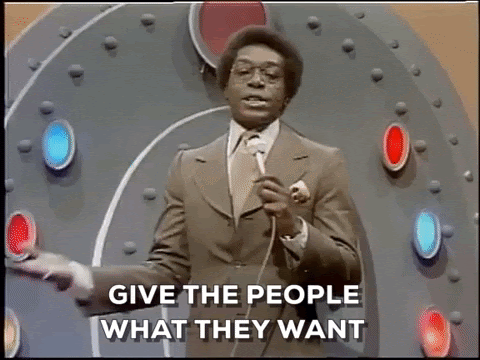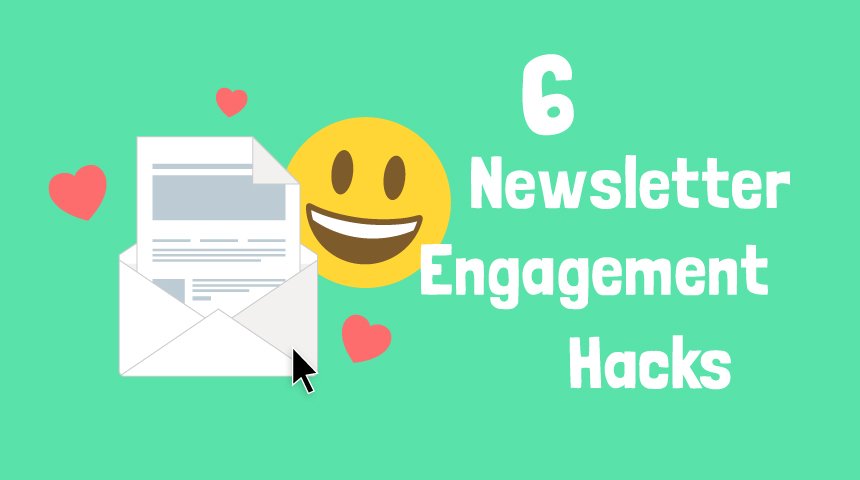Employee newsletters should be straightforward, right?
Find some content about the company, paste it in, find some images, and bam, call it a newsletter.
But we all know that’s not usually how it works. Especially if you want employees to engage with your newsletter and actually read the thing.
You’ve got a lot of competition for employees’ attention. That’s why we’ve put together these six engagement hacks that will help you hook employees on your internal newsletter.
1. Write me-mails, not emails

People don’t want email; people want ME-mail.”
Seth Godin
The last thing employees want to read is content that has nothing to do with them or their interests.
There’s no good reason you shouldn’t be treating employees like customers when it comes to communications. You should be selling them on your content and its value. If you want employees to read your content, you have to spin it so they see how it’s relevant to them and their jobs.
Employees want to read about issues that are relevant to themselves and their colleagues. They want to hear about how you’re going to help them and make their lives better.
A great way to hone your me-mail technique is to get employees to submit their own content. Whether it’s images or stories, encouraging employee participation through user-generated content is a great way to engage employees and make your newsletter more personal.
2. Don’t reinvent the wheel
No one is going to read everything you write every time. Employees will miss content, no matter how much time or effort you put into it.
Reusing content is a great way to make sure important messages, articles, or links are seen by the maximum number of people. As long as you have a good balance of older and newer content, recycled content again isn’t likely to dissuade readers from engaging.
If you can measure which links your audience is clicking, it’s easy to find out which content you should be reusing. If a feature has less engagement than usual, try it in a different format or change its placement in the newsletter.
For links or content that you want to reuse because it’s not getting the engagement you’re looking for, try looking at the problem holistically to assess why employees aren’t engaging with it.
- Is it hard to read?
- Is it clear what it’s about?
- Is it relevant?
- Was the message sent while employees were unavailable?
- Does it get skimmed because it doesn’t stand out visually?
- Is there a content type that would make this information more engaging?
Before you rework the content, assess why it isn’t performing. Then test it in different ways. Try using video, images, or even just different text and headlines. You’ll see how engagement changes and see what kind of content performs best with your audience.
3. Spice it up with new content
We’re blessed (or is it cursed?) to live in interesting times.
Your employees’ attention and time is at the mercy of social media, cell phones, apps, devices, and the internet.
The good news is that you have more choices and means than ever when it comes to deciding how you want to capture employees’ attention.
There are two great ways to use and present content.
First, explore which media types are most engaging with your workforce. Desk workers might find video, images, drawings, and infographics more engaging.
Non-desk workers might prefer to get their information via audio messages or in simple texts they can read on their phones.
Then experiment with what types of content you send to your employees. Test which content works best with which media types, and you can discover the perfect pairing of content and channel.
Need some inspiration? We’ve got dozens of compelling content ideas right here.
4. Get the most important information out first
Not all content is created equal.
There are need-to-haves and nice-to-haves. Make sure that your need-to-have content is displayed prominently in your newsletter.
No one likes to have their time wasted. Keep the most important information easily accessible at the top of your newsletter. User attention drops significantly after the fold (the bottom of what’s visible on a screen without scrolling), so make sure your most important info is front and center.
Placing your most important stories first also shows that the newsletter has a purpose. If all of your newsletter content is as relevant and helpful to employees as your first items, you’ll likely get the engagement you’re looking for.
5. Make it snackable
The best newsletter writing gets straight to the point.
Free write what you want to write about, then cut half of it. Rewrite it again for clarity, and then cut out anything that isn’t relevant. If it’s not necessary, don’t include it.
This isn’t the time for complicated terminology that only makes sense to a select few in your company. Show how smart you are by being concise and direct instead.
If you’re editing for a colleague or executive, you may have to be more gentle when it comes to cutting back the fluff. It’s best to communicate to them that the fewer words they use the more impactful their message will be, and the more likely people will be to read it and understand it.
6. Break it up visually
Readability isn’t just about word choice. The way your newsletter is formatted and how its content is displayed makes a huge difference.
If your page is cluttered with jammed together images and text, most people will have a hard time reading it, if they read it at all.
Leveraging white space is a great way to make your content easier to read. White space also makes the newsletter look like it has less text, helping to counter content overload.
You can also use well-placed images, lines, and good font choices to break up the visual density of your newsletter and make it more readable.
These engagement hacks are some of the best ways to get readers engaged and coming back for more. If you want to learn more awesome ways to make employees fall in love with your content, head on over to our resource library.




